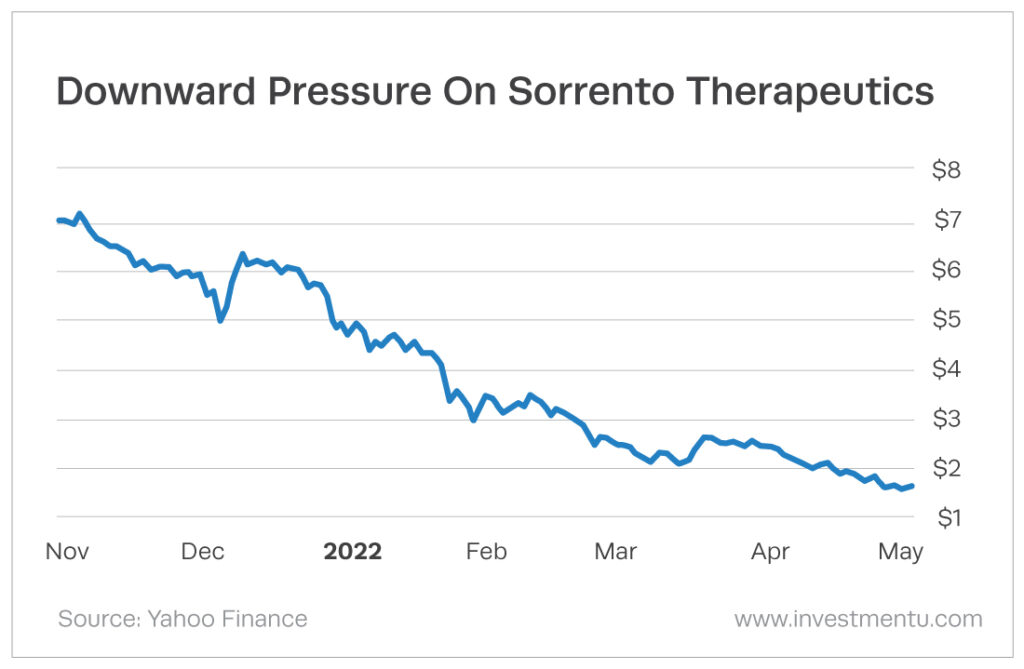Investment U Conference 2022: Day 3 Recap
Day three of the Investment U conference started with a call for attendees’ thinking caps. Income expert Marc Lichtenfeld opened up the day with a deep dive on reading stock charts. The point here was to help investors learn how to lower risk and improve profits by using his favorite tools.
Learning how to properly read stock charts. Using some of Lichtenfeld’s teachings can also help investors find profitable trends. However, Lichtenfeld did stress the importance of preparing long-term investments first. But once those are squared away, then it makes sense to start trading with higher frequency.
There’s a wide chasm between fundamental analysis and technical analysis. When it comes to a buy-and-hold strategy, fundamental analysis is usually enough. But when it comes to short- and medium-term trading, technical analysis can be vital. Because as economist John Maynard Keynes reportedly said, “Markets can remain irrational longer than you can remain solvent.” And charts can help identify which direction a stock is likely to go.
As one of the few chartered market technicians out there, Lichtenfeld knows this first-hand. Charts represent the psychology of the markets. They show whether fear or greed is dominating.
After sharing some of the chart patterns he looks for and relies on, Lichtenfeld shared an illustrative anecdote. A relative of his had been singing the praise of Sorrento Therapeutics (Nasdaq: SRNE). And the fundamentals of the company did look good. The problem is the markets just don’t like it. And downward pressure has sent this former $10 stock down to around $1.50.

Like Newton said, a body in motion tends to stay in motion. And the motion, in this case, is down.
Stocks to Gold
Lichtenfeld was followed by a remote presentation from natural resource expert and founder of Sprott Global Resource Investments, Rick Rule. From his office in Escondido, California, Rule explained what he sees as a unique opportunity for investors: a bull market in both the precious metals and natural resources space at the same time.
Rule noted that he sees conventional savings and investment products being overshadowed by interest in precious metals and precious metals equities going forward. And increases in population and living standards paired with geopolitical concerns are increasing the need for industrial metals. All of which will only increase the interest in this sector as well.
Furthermore, he noted that gold bull markets typically last around 10 years – and the current one is just a few years old. So if you think you’re too late to capitalize of gold’s surge in value, you might not be.
And Back to Stocks
The first of two presentations before the lunch break came from engineering strategist, David Fessler. In his presentation, Fessler explained the ways he saw that investors could cash in on the explosive demand for disruptive metals. Electric vehicles, hydrogen fuel cells and robotics are all very disruptive technologies. And their advent is creating huge demand for the materials they are made of.
Until extraction and processing these materials becomes more cost effective, many of them are likely to be in short supply soon. And Fessler laid out his favorite ways to profit off the next wave of the green revolution. (Unfortunately, his plays are all reserved for those were in attendance or participated in the live stream.)
Brad Thomas, the CEO of Wide Moat Research followed Fessler with a thorough explanation of the often misunderstood REIT market. These are real estate investment trusts. And they come in many varieties.
One of the main reasons REITs can be such a powerful investment is they must payout at least 90% of net earnings to shareholders by way of dividends. And this is mandated by law. This paired with a dividend reinvestment program (which many now provide) can be a very lucrative way to grow your wealth. And that’s just one of the reasons why Thomas believes REITs should be a core of any investors portfolio.
After Lunch…
Investment expert Alexander Green kicked off the post-lunch portion of the final day of the Investment U conference. And he did so by talking about the two short-term trading strategies that actually work… Even in a year like we’re having in 2022.
This is the worst beginning of the year for markets since 1939, Green noted. But while portfolios might be down, they shouldn’t be out… If you know what to look for. One of his favorite ways to make short-term gains is by looking for momentum stocks. Green then explained the 10 characteristics he looks for in an investment-worthy momentum stock.
However, while finding a good investment is important, it’s just as important to know when to sell. This brings in the significance of laddered and trailing stops to protect profit and principle. Because you should never let a loss turn into an unacceptable loss.
The other strategy that Green unpacked was insider trading. This is all about following the smart money. Officers and directors of companies are privy to a boatload of information that average investors simply aren’t. This gives them invaluable insight into whether their company is poised to do well or not. And when a cluster of these employees start buying, it usually sends a strong “buy” signal.
After Green delivered his how-to on momentum and insider investing, therapist and life coach Dr. Joel Wade offered some salient advice investors should heed. And that is the part that takes place in our heads.
He began with a story that took place a few decades ago. He and a friend were hiking in a remote location with no access to any means of communication beyond the radio they were carrying. That’s how they heard about Black Monday – the famous market crash in 1987. Wade’s friend was heavily invested. And he feared he’d lost everything. If he had the chance, he would have sold everything. But this would have been a big mistake.
There are scores of theories about what caused the largest crash (percentage wise) in the history of the Dow Jones Industrial Average. But that’s besides the point. The important thing to note is that the recovery didn’t take long. And selling would have wiped out a huge chunk of his friends investments.
You see, moods are ancient. They help us regulate energy and motivation. But when faced with major loss or the feelings of being trapped, they can lead to irrational behaviors. They can cloud our judgement. This is why discipline is so important when it comes to investing. Once you have your strategy in place, stick to it… And don’t let your mood or the current situation harm your judgement.
The Main Event

Ding! Round one of the faceoff between income expert Marc Lichtenfeld and technical options expert Bryan Bottarelli was about to begin. The big question? Will the market crash in 2022?
There’s war in Ukraine. Rising interest rates. Home prices are shooting off the charts. So does that mean the markets are due to crash? Well, that depends on who you are.
From Bottarelli’s point of view, all of that is priced into the stock market right now. The recent downtrend in the markets likely isn’t a long-term trend. However, Lichtenfeld noted that many companies simply won’t be able to pass the rising prices onto consumers. And that could lead to a big hit on bottom lines and share prices.
The arguments went back and forth. But the rally between the two seemingly ended with the ball resting perfectly between the two on the top of the net. Both agreed that short-term trading was a much more appealing strategy for the time being. And furthermore, even if the market crashes, there will still be plenty of ways to profit from it.
Bottarelli noted that he could become bullish on defense stocks depending on how the conflict in Ukraine continues. He also brought up that there are lots of ways to adjust a portfolio if a recession hits. Premium brands like Lululemon (Nasdaq: LULU) don’t make sense if folks are cutting back on spending. But it could mean a boon for Dollar Tree (Nasdaq: DLTR) and Walmart (NYSE: WMT). So short Lululemon and buy the other two.
Additionally, as a chartered market technician, Lichtenfeld pointed out that the markets in general are trending down… hard. However, that can present a lot of opportunities. He noted that the insurance index is actually on an upward trend. However, the network index is in the midst of a head and shoulders chart pattern. This extremely bearish pattern could mean it’s a good time to short networking companies – or the index as a whole.
In the end, neither convinced the other they were wrong. But that’s not all that important. The important part is that whether the market crashes in 2022 or not, there will be plenty of ways to profit from it. But at the same time, it will always be important to protect your investments – regardless of what the market does. Ding, ding, ding. It was a draw.
[adzerk-get-ad zone="245143" size="4"]About Matthew Makowski
Matthew Makowski is a senior research analyst and writer at Investment U. He has been studying and writing about the markets for 20 years. Equally comfortable identifying value stocks as he is discounts in the crypto markets, Matthew began mining Bitcoin in 2011 and has since honed his focus on the cryptocurrency markets as a whole. He is a graduate of Rutgers University and lives in Colorado with his dogs Dorito and Pretzel.





